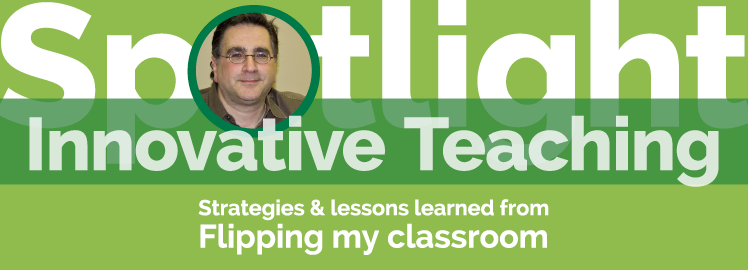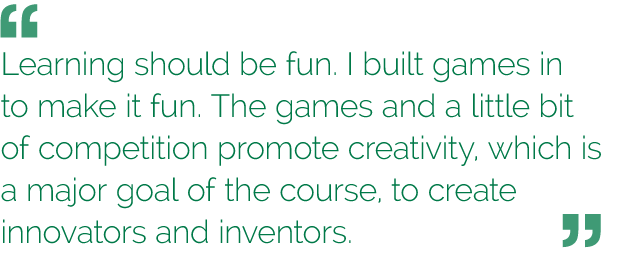|
Class often begins with a discussion of students’ pre-class work submitted to the course blog. This initial discussion helps students broaden their perspectives regarding potential applications of course concepts, challenges preconceptions, and provides a mechanism to address misunderstandings regarding fundamental concepts.
Other class activities include a variety of games and application exercises. One popular game is called "How It's Made". Professor Antaki projects short video clips from YouTube, demonstrating how a product is created. Using TV-game-show-style buzzers, students score points every time they correctly recognize how a course principle is illustrated during the video. If students earn enough points, they receive a reward.
Students also commonly work individually, in pairs, or as an entire class to practice applying a toolkit of innovative problem solving strategies. For example, students might be challenged to tackle a real-world problem extracted from the news, such as how to remedy a medical product that has been recalled. Alternatively, students might be tasked with designing a new product, such as how to prevent patients in wheelchairs from developing bed sores. A subset of students then share and critique their ideas with classmates by presenting them on the whiteboard or through the course blog.
|
Before class, students watch video lectures, each approximately 45 minutes of slides with voiceover, posted in Blackboard. There’s no textbook appropriate for this course. Thus, videos synthesize and provide expert commentary on a variety of theoretical and applied resources.
Next, students are challenged to search the internet to find examples illustrating applications of the concepts and strategies highlighted in the videos. Students post their examples and commentary to a course blog in Blackboard, providing rich source material for classroom discussions.
Simultaneously, the blog allows Professor Antaki to gauge students’ understanding and adjust his teaching plans accordingly before class. After class, students complete homework assignments and projects to integrate and extend their learning.
|

